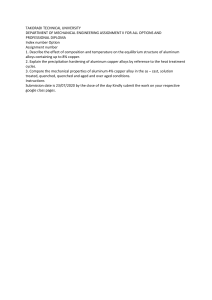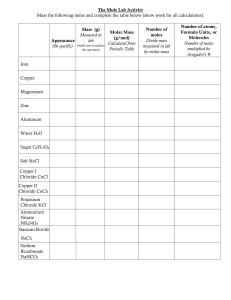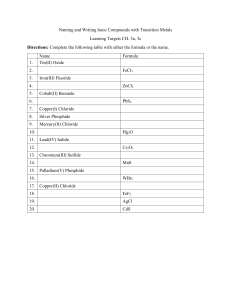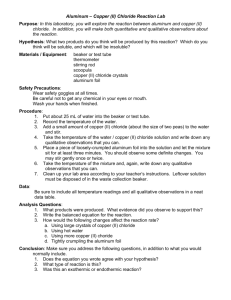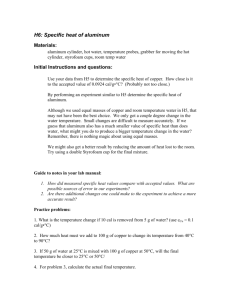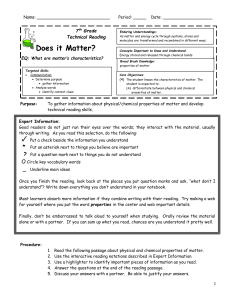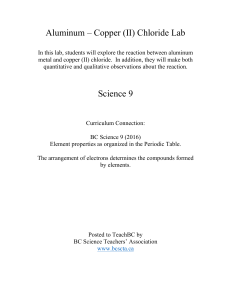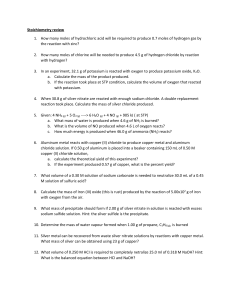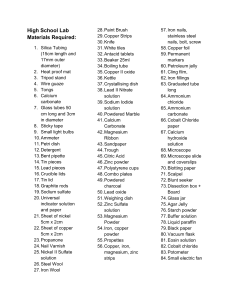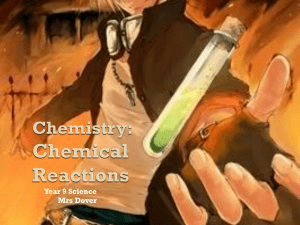Physical & Chemical Properties of Matter Worksheet
advertisement
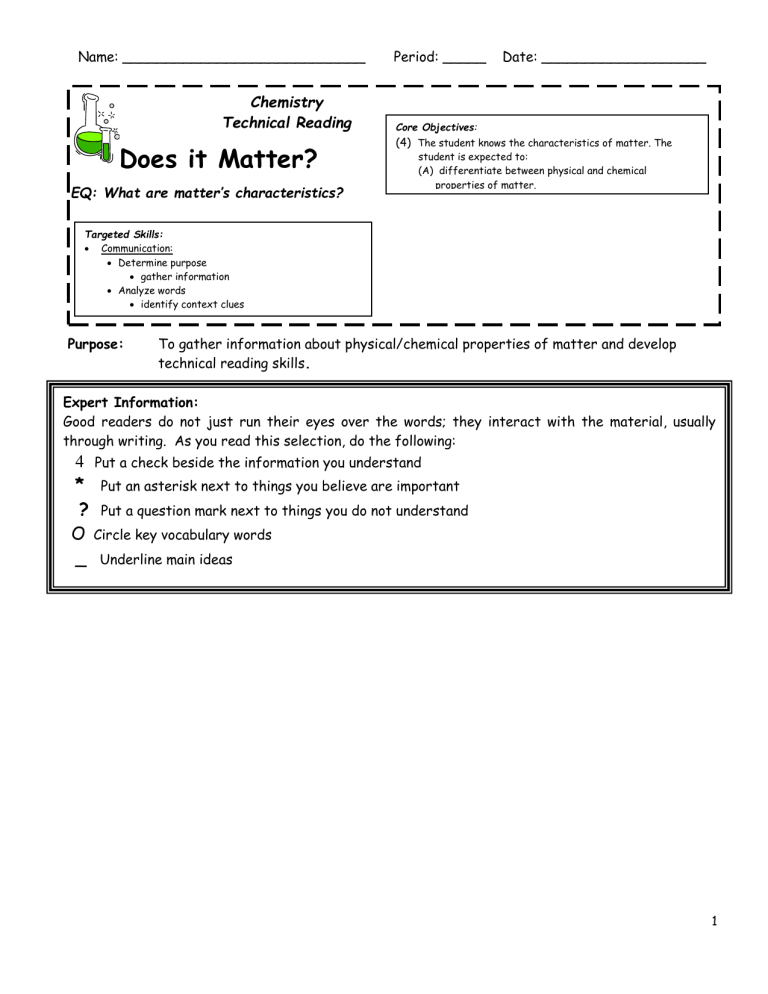
Name: ____________________________ Chemistry Technical Reading Does it Matter? EQ: What are matter’s characteristics? Period: _____ Date: ___________________ Core Objectives: (4) The student knows the characteristics of matter. The student is expected to: (A) differentiate between physical and chemical properties of matter. Targeted Skills: Communication: Determine purpose gather information Analyze words identify context clues Purpose: To gather information about physical/chemical properties of matter and develop technical reading skills. Expert Information: Good readers do not just run their eyes over the words; they interact with the material, usually through writing. As you read this selection, do the following: Put a check beside the information you understand * Put an asterisk next to things you believe are important ? Put a question mark next to things you do not understand O Circle key vocabulary words _ Underline main ideas 1 Physical and Chemical Properties of Matter All matter has properties. We recognize a person by his face, voice, height, fingerprints, DNA, and other factors. The more properties identified, the better we know the person. In a similar way, matter has many properties. The two basic types of properties associated with matter are physical and chemical. Physical Properties Physical properties do not change the chemical nature of matter. A physical change occurs in shape, form, or appearance but no new substance is created. Examples of physical properties include color, odor, hardness, texture, luster, volume or size, shape, solubility (ability to dissolve), molecular polarity (positively or negatively charged), freezing, boiling and melting points, taste, magnetism, density, salinity, absorbency, and many others. Solubility and polarity are classified as physical properties because no new substances are produced as a result of testing for these properties. Chemical properties Chemical changes deal with reactions of two or more substances and result in the formation of new material. Chemical properties change the chemical nature of matter. Examples of chemical properties are heat of combustion, reactivity with water or other materials, and pH. For example, copper reacts with nitric acid to produce brown fumes. In the form of a compound, copper chloride in the presence of aluminum, will decompose (break down) into copper and aluminum chloride. Decomposition of copper with other chemicals is one of its chemical properties. 2
